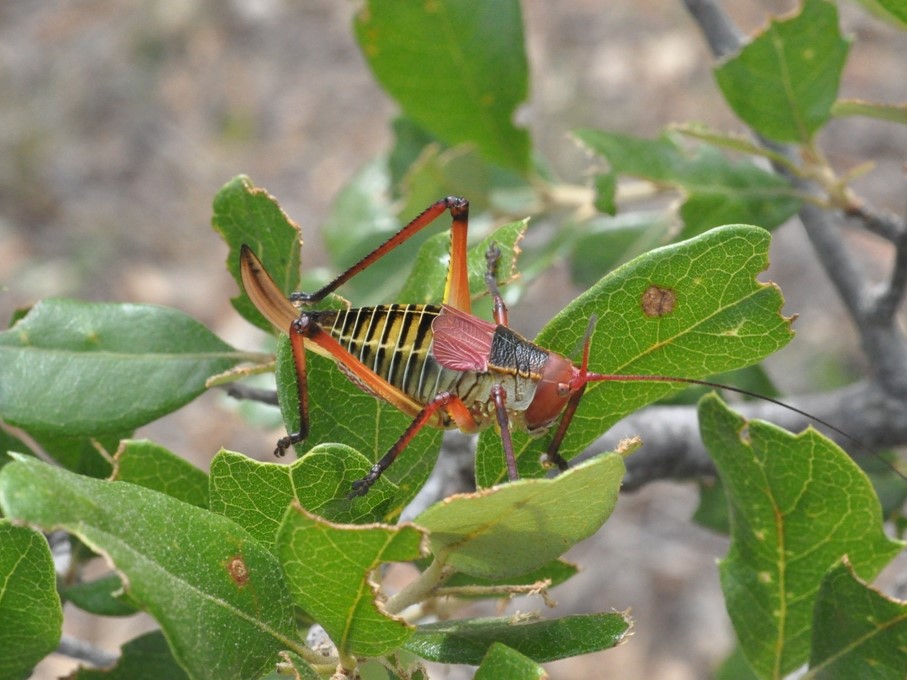Katydids are members of the order Orthoptera, which include the grasshoppers, crickets, and other species of katydids. They are a form of long-horned grasshopper (family Tettigoniidae).
Katydids get their name from the sound males make as they rub their wings together. The song of the male katydid, a form of insect communication, is a familiar sound on warm summer nights. The females do not make sounds.
Known as the cause of a large defoliation event in 2001 in Lee County, TX, the truncated true katydid, Paracyrtophyllus robustus, are brown colored and camouflage themselves as dead leaves.
The northern true katydid, Pterophylla carnellifolia, is more commonly found in Texas and other southern and eastern states, but adults are green, rather than brown.
Lifecycle
Immature katydids, or nymphs, resemble adult katydids minus the presence of fully developed wings.
Female katydids are easily recognizable by the curved, sword-like ovipositor on the abdomen, used to lay eggs beneath the bark of trees. Eggs are laid under the bark of a variety of hardwood trees though dense, hard bark like that found on post oak trees may inhibit oviposition.
Impact
Katydids are usually not a huge problem, but environmental conditions can sometimes lead to large scale outbreaks.
Large populations of foliage-feeding insects, particularly grasshoppers, often emerge after successive years of drought. Katydid outbreaks are usually short-lived with populations rapidly decreasing due to natural causes. Defoliated trees usually recover with few adverse effects.
Control
Though there are several insecticides available to kill grasshoppers and katydids, numerous applications are required to assure control, and such heavy-handed treatments are seldom justified. Control of these insects with insecticides is not recommended.
